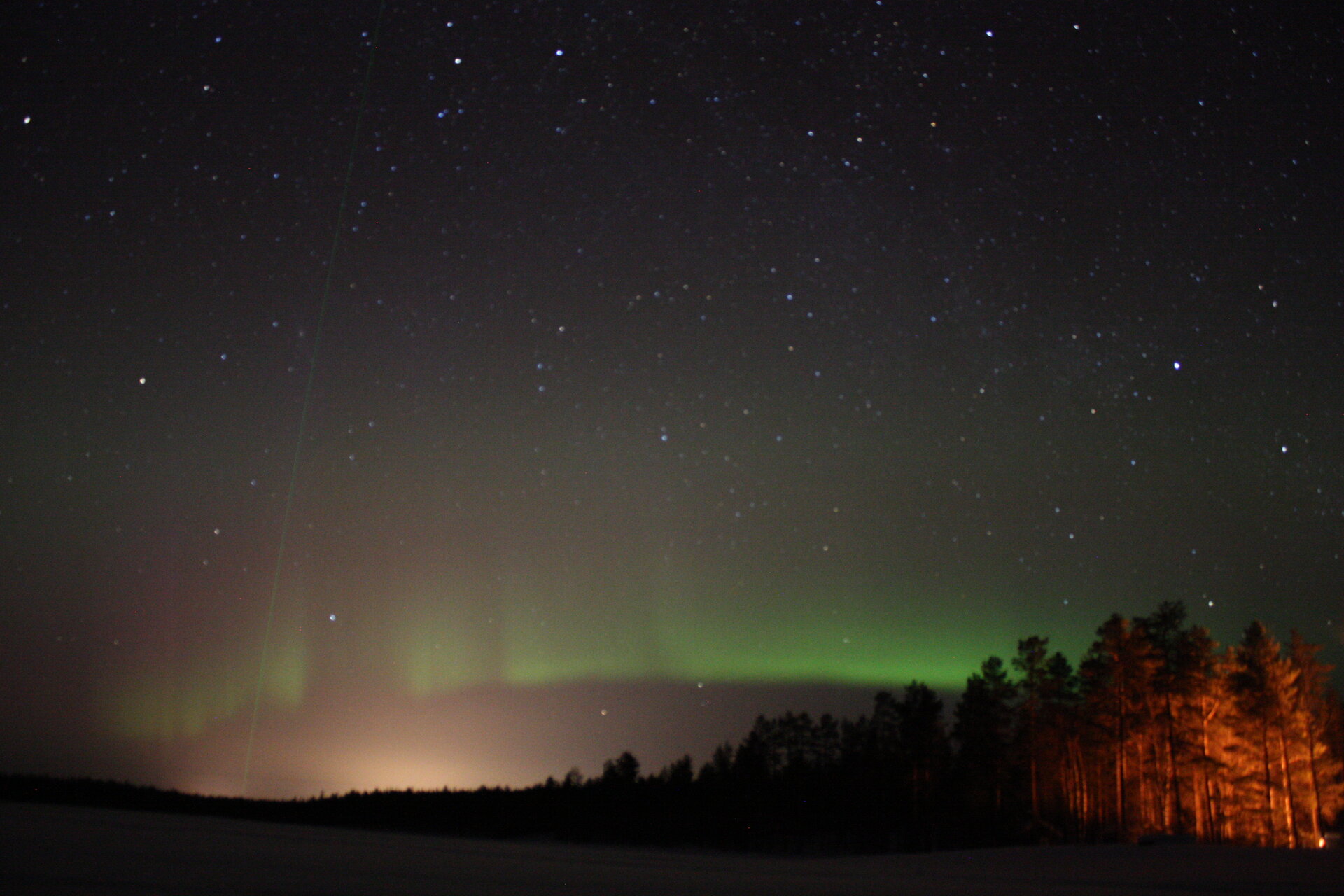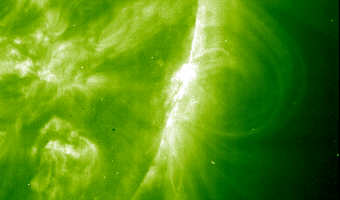Space weather
The Northern Lights – Aurora Borealis – above Finnish Lapland near Sodankylä during ESA’s space weather conference. Northern Lights occur when charged particles from the Sun hit Earth’s atmosphere.
With the exception of auroras, phenomena above our immediate atmosphere such as plasma and magnetic fields generally cannot be seen without special equipment.
Just as it is possible to predict conditions for seeing rainbows, satellites and observation posts can monitor our environment to predict space weather above us.
These forecasts are important because space weather can influence space-based telecommunications, broadcasting, meteorological observations, satellite navigation and even Earth-based communications, electricity grids, railway networks and gas pipes, especially at northern latitudes.
The green vertical stripe in the picture is a laser beam from the Finnish Meteorological Institute’s Arctic Research Centre to measure cloud particles and aerosols in the upper atmosphere.
To see the Northern Lights, it is best to head as far north as possible and check the space weather. This is a particularly good year to see auroras because the Sun is at the peak of its 11-year cycle of activity. But be prepared to brave the cold – this picture was taken at –27°C.
Some of the best views of auroras are not from below, on Earth, but above our atmosphere from the International Space Station. The timelapse video below was taken by ESA astronaut André Kuipers during his six-month stay on the orbital outpost.















 Germany
Germany
 Austria
Austria
 Belgium
Belgium
 Denmark
Denmark
 Spain
Spain
 Estonia
Estonia
 Finland
Finland
 France
France
 Greece
Greece
 Hungary
Hungary
 Ireland
Ireland
 Italy
Italy
 Luxembourg
Luxembourg
 Norway
Norway
 The Netherlands
The Netherlands
 Poland
Poland
 Portugal
Portugal
 Czechia
Czechia
 Romania
Romania
 United Kingdom
United Kingdom
 Slovenia
Slovenia
 Sweden
Sweden
 Switzerland
Switzerland
































